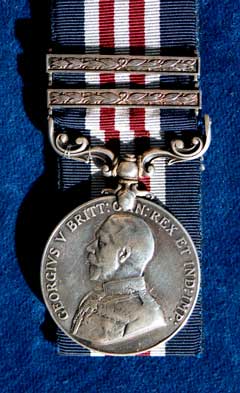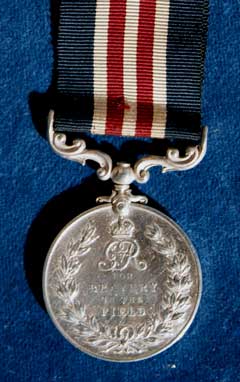 |
King's Own Royal Regiment Museum Lancaster |
|
|
HOME Museum & Collections Sales Donations Events Contact Us REGIMENTAL HISTORY 17th Century 18th Century 19th Century 20th Century First World War Second World War Actions & Movements Battle Honours FAMILY HISTORY Resources Further Reading PHOTO GALLERY ENQUIRIES FURTHER READING LINKS |
MEDAL INFORMATION Military Medal Face
Reverse
Size
Composition
Ribbon
Suspension
Naming
Bars
Awarded Around 120,000 Military Medals were awarded for World War One, 1914-18, and about 5,800 first bars, 180 second bars and one third bar. Awards to women numbered 127, plus about a dozen honorary awards made to foreign women. In World War Two, 1939-45, nearly 16,000 Military Medals were awarded, with 164 first bars, and two second bars. For lesser campaigns between the wars about 260 awards were made. Since World War Two about 700 awards have been made and a few first bars awarded for operations in such places as Palestine, Malaya, Korea, Aden, Borneo, Northern Ireland and the Falklands. Some Military Medals have been awarded to Royal Navy and Royal Air Force personnel for operations on land. The award of the medal to women was most commonly to nurses, auxiliaries and ambulance drivers serving in the various aid organisations immediately in the rear of the front lines in France and Flanders and in Italy during World War One. All awards of the Military Medal are notified in the London Gazette, but relatively few have the citation published. World War One citations are not usually available. The
King’s Own Medals issued prior to 1920 are recognised by ‘R. LANC. R.’ the shortened version of the title: The King’s Own (Royal Lancaster Regiment). After 1920, when the title changed to its final form, the shortened title ‘KINGS OWN R.’ appeared on the medals, although those to men of the ‘converted’ units did not conform to this pattern. Military Medals in the museum's collection The citations for Second World War MM Awards to the King’s Own can be found in the book ‘Heroic Deeds’ published by the Museum.
The Military Medal |


